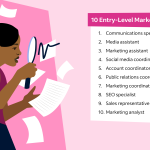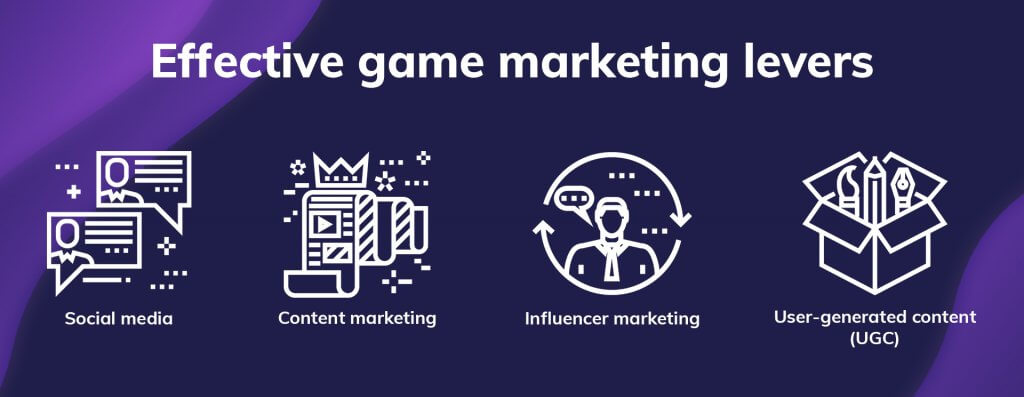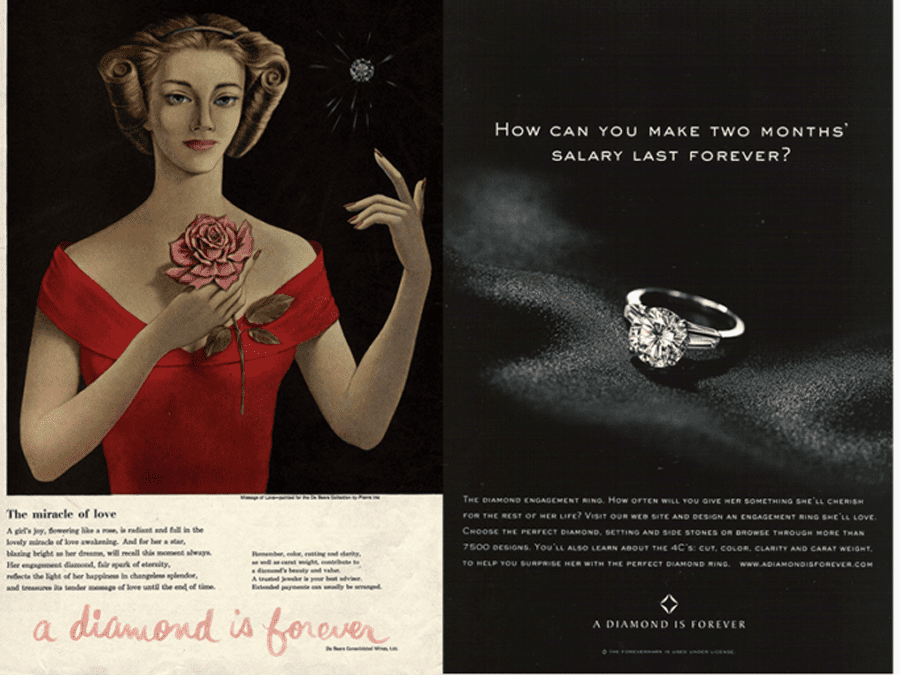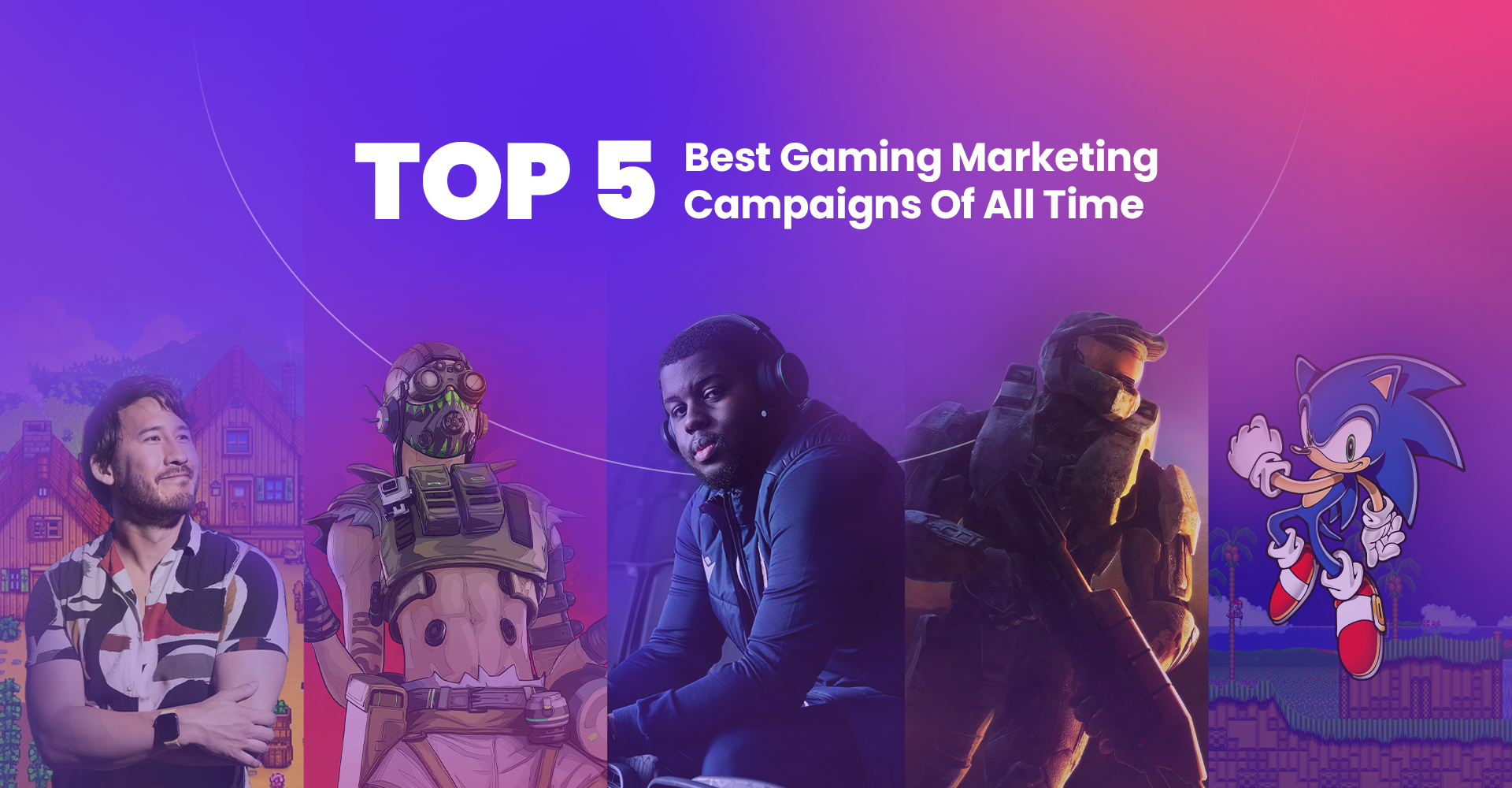The gaming industry has become a powerhouse of creativity, not only in game development but also in marketing. Over the years, some campaigns have stood out for their innovation, engagement, and ability to capture the imagination of players worldwide. From viral stunts to immersive storytelling, the best gaming marketing campaigns transcend traditional advertising, creating memorable experiences that resonate long after launch. These campaigns often leverage cutting-edge technology, social media trends, and community involvement to build hype and loyalty. In this article, we explore some of the most impactful gaming marketing campaigns, examining what made them successful and how they redefined the way games are promoted.
In Your Opinion, What Are Some of the Best Gaming Marketing Campaigns?
When it comes to gaming marketing campaigns, creativity, innovation, and audience engagement are key. Over the years, several campaigns have stood out for their ability to captivate audiences and generate buzz. Below, we explore some of the most memorable and effective gaming marketing campaigns.
See Also Taking on Social Media and Digital Marketing
Taking on Social Media and Digital Marketing1. The Legend of Zelda: Breath of the Wild - Open World Exploration
The marketing campaign for The Legend of Zelda: Breath of the Wild focused heavily on the game's open-world exploration. Nintendo showcased the game's vast landscapes, dynamic weather systems, and freedom of choice, which resonated deeply with players. The campaign included immersive trailers, hands-on demos at events like E3, and a strong social media presence that highlighted the game's unique features.
| Key Element | Impact |
|---|---|
| Open-world exploration | Highlighted the game's freedom and creativity |
| Immersive trailers | Generated excitement and anticipation |
| Hands-on demos | Allowed players to experience the game firsthand |
2. Fortnite - Cross-Platform Play and Collaborations
Fortnite revolutionized gaming marketing with its emphasis on cross-platform play and high-profile collaborations. The game's ability to bring players together across consoles, PCs, and mobile devices was a major selling point. Additionally, partnerships with brands like Marvel, Travis Scott, and Nike created viral moments that kept the game in the spotlight.
See Also Simple Video Editing Software for Captions and Basic Edits?
Simple Video Editing Software for Captions and Basic Edits?| Key Element | Impact |
|---|---|
| Cross-platform play | Expanded the player base and community |
| Brand collaborations | Generated massive media attention |
| Live in-game events | Created unforgettable experiences for players |
3. Cyberpunk 2077 - Hype and Controversy
The marketing campaign for Cyberpunk 2077 was a masterclass in building hype, though it also faced significant controversy. CD Projekt Red leveraged cinematic trailers, celebrity endorsements (like Keanu Reeves), and extensive pre-release coverage to create immense anticipation. However, the game's launch issues highlighted the risks of overpromising in marketing.
| Key Element | Impact |
|---|---|
| Cinematic trailers | Built excitement and showcased the game's world |
| Celebrity involvement | Attracted mainstream attention |
| Pre-release hype | Led to record-breaking pre-orders |
4. Pokémon GO - Augmented Reality and Real-World Interaction
Pokémon GO took the world by storm with its innovative use of augmented reality (AR) and real-world interaction. The campaign encouraged players to explore their surroundings to catch Pokémon, creating a global phenomenon. The game's launch was supported by social media buzz, community events, and partnerships with local businesses.
See Also What Is an Entry Level Marketing Job to Start My Career?
What Is an Entry Level Marketing Job to Start My Career?| Key Element | Impact |
|---|---|
| Augmented reality | Made the game unique and engaging |
| Real-world exploration | Encouraged physical activity and social interaction |
| Community events | Strengthened player engagement |
5. Call of Duty: Modern Warfare - Realism and Cinematic Storytelling
The marketing campaign for Call of Duty: Modern Warfare emphasized realism and cinematic storytelling. The game's trailers and promotional materials focused on its gritty, immersive narrative and cutting-edge graphics. Activision also leveraged nostalgia by revisiting the beloved Modern Warfare series, which resonated with long-time fans.
| Key Element | Impact |
|---|---|
| Realism | Appealed to fans of military shooters |
| Cinematic trailers | Highlighted the game's narrative depth |
| Nostalgia | Reconnected with long-time fans of the series |
Which marketing campaign is most successful?

 Event Marketing Platform for Customer Events?
Event Marketing Platform for Customer Events?What Defines a Successful Marketing Campaign?
A successful marketing campaign is defined by its ability to achieve specific goals, such as increasing brand awareness, generating leads, or driving sales. Key factors include:
- Clear Objectives: The campaign must have well-defined goals that align with the overall business strategy.
- Target Audience: Understanding and reaching the right audience is crucial for effectiveness.
- Engagement: High levels of interaction, such as clicks, shares, and comments, indicate a successful campaign.
How to Measure the Success of a Marketing Campaign
Measuring the success of a marketing campaign involves analyzing various metrics to determine its impact. Important metrics include:
- Return on Investment (ROI): Calculating the financial return relative to the cost of the campaign.
- Conversion Rates: Tracking how many leads or interactions turn into actual sales or desired actions.
- Customer Acquisition Cost (CAC): Determining the cost of acquiring a new customer through the campaign.
Examples of Highly Successful Marketing Campaigns
Some of the most successful marketing campaigns in history have set benchmarks for creativity and effectiveness. Notable examples include:
- Nike's Just Do It: A campaign that revolutionized brand loyalty and consumer engagement.
- Apple's Get a Mac: A series of ads that effectively differentiated Apple from its competitors.
- Coca-Cola's Share a Coke: A personalized campaign that boosted sales and social media engagement.
Key Elements of a Winning Marketing Campaign
Creating a winning marketing campaign requires a combination of strategic planning and creative execution. Essential elements include:
- Compelling Storytelling: Crafting a narrative that resonates with the audience.
- Strong Visuals: Using eye-catching graphics and videos to capture attention.
- Consistent Messaging: Ensuring all communication aligns with the brand's values and goals.
Common Mistakes to Avoid in Marketing Campaigns
Even well-planned campaigns can fail due to common mistakes. To avoid pitfalls, consider the following:
- Lack of Research: Failing to understand the target audience or market trends can lead to ineffective campaigns.
- Overcomplicating the Message: Clear and concise messaging is more likely to resonate with the audience.
- Ignoring Analytics: Not tracking and analyzing campaign performance can result in missed opportunities for improvement.
What is a video game campaign?

A video game campaign refers to the primary storyline or mode in a game that players progress through by completing levels, missions, or objectives. It often serves as the core experience, providing a structured narrative and gameplay challenges. Campaigns can vary in length and complexity, ranging from short, linear stories to expansive, open-world adventures.
What Defines a Video Game Campaign?
A video game campaign is defined by its structured progression and narrative-driven gameplay. Key elements include:
- Storyline: A campaign typically revolves around a central plot, with characters, settings, and events driving the player's journey.
- Objectives: Players are given specific tasks or missions to complete, which advance the story and unlock new content.
- Progression: As players complete objectives, they often gain new abilities, equipment, or access to new areas, creating a sense of growth and achievement.
Types of Video Game Campaigns
Video game campaigns can be categorized into several types based on their design and structure:
- Linear Campaigns: These follow a straightforward path with little deviation, guiding players through a fixed sequence of events.
- Open-World Campaigns: These allow players to explore a vast, interconnected world at their own pace, often with non-linear objectives.
- Branching Campaigns: These feature multiple story paths or endings, influenced by player choices throughout the game.
Key Features of a Video Game Campaign
A well-designed campaign often includes the following features:
- Engaging Narrative: A compelling story that keeps players invested in the characters and world.
- Challenging Gameplay: Balanced difficulty and varied mechanics to maintain player interest.
- Rewards and Incentives: Systems that reward players for completing objectives, such as unlocking new content or improving their character.
How Campaigns Differ from Other Game Modes
Campaigns are distinct from other game modes like multiplayer or sandbox modes in several ways:
- Focus on Story: Campaigns prioritize narrative over competitive or free-form gameplay.
- Structured Experience: They provide a guided experience, unlike open-ended modes.
- Single-Player Focus: While some campaigns include co-op, they are primarily designed for solo play.
The Role of Campaigns in Player Engagement
Campaigns play a crucial role in keeping players engaged by offering:
- Immersion: A rich narrative and world-building draw players into the game's universe.
- Progression: A sense of accomplishment as players overcome challenges and advance the story.
- Replayability: Features like branching paths or hidden content encourage players to revisit the campaign.
What is gaming in marketing?

What is Gaming in Marketing?
Gaming in marketing refers to the use of game-like elements, mechanics, and strategies in marketing campaigns to engage and motivate consumers. This approach leverages the principles of gamification, such as rewards, challenges, and competition, to create interactive and immersive experiences that drive customer participation and brand loyalty. It is commonly used in digital marketing, mobile apps, and social media platforms to enhance user engagement and achieve specific marketing goals.
How Does Gaming Enhance Customer Engagement?
Gaming in marketing enhances customer engagement by incorporating interactive elements that make the experience enjoyable and memorable. Here are some key ways it achieves this:
- Rewards and Incentives: Offering points, badges, or discounts encourages users to participate actively.
- Challenges and Competitions: Introducing leaderboards or timed challenges fosters a sense of competition and achievement.
- Personalization: Tailoring game mechanics to individual preferences increases relevance and interest.
What Are the Benefits of Gaming in Marketing?
The benefits of gaming in marketing are significant and multifaceted. Here are the primary advantages:
- Increased Brand Awareness: Interactive campaigns are more likely to be shared, expanding reach.
- Improved Customer Retention: Gamified experiences keep users coming back for more.
- Data Collection: Gaming mechanics provide valuable insights into user behavior and preferences.
Examples of Gaming in Marketing
Many brands have successfully integrated gaming into their marketing strategies. Here are some notable examples:
- McDonald's Monopoly: A classic campaign where customers collect game pieces to win prizes.
- Nike Run Club: A fitness app that uses gamification to motivate users to achieve running goals.
- Starbucks Rewards: A loyalty program that uses points and levels to encourage repeat purchases.
How to Implement Gaming in Marketing Strategies
Implementing gaming in marketing requires careful planning and execution. Here are the steps to follow:
- Define Objectives: Clearly outline what you want to achieve, such as increased engagement or sales.
- Choose Game Mechanics: Select elements like points, levels, or challenges that align with your goals.
- Integrate Technology: Use platforms or tools that support gamification, such as mobile apps or social media.
Which one is the famous advertising campaign?

What Makes an Advertising Campaign Famous?
A famous advertising campaign is one that achieves widespread recognition and leaves a lasting impact on its audience. These campaigns often stand out due to their creativity, emotional appeal, and ability to resonate with a broad demographic. Key factors that contribute to their fame include:
- Unique Concept: A memorable idea or theme that captures attention.
- Emotional Connection: Campaigns that evoke strong emotions, such as happiness, nostalgia, or inspiration.
- Cultural Relevance: Aligning with current trends or societal issues to stay relatable.
Examples of Iconic Advertising Campaigns
Some of the most famous advertising campaigns in history have become cultural landmarks. These campaigns are often referenced and remembered for decades. Notable examples include:
- Nike's Just Do It: A slogan that embodies motivation and determination.
- Apple's 1984 Super Bowl Ad: A groundbreaking commercial that introduced the Macintosh computer.
- Coca-Cola's Share a Coke: Personalized bottles that encouraged social sharing.
Key Elements of a Successful Advertising Campaign
To create a famous advertising campaign, certain elements must be carefully crafted. These elements ensure the campaign's effectiveness and longevity. Key components include:
- Clear Message: A concise and impactful message that communicates the brand's value.
- Visual Appeal: Striking visuals or designs that grab attention and leave an impression.
- Consistency: Maintaining a consistent tone and style across all platforms.
The Role of Media in Advertising Campaigns
Media plays a crucial role in the success of an advertising campaign. The choice of media channels can significantly influence the campaign's reach and impact. Important considerations include:
- Television and Radio: Traditional media that still holds significant influence.
- Social Media: Platforms like Instagram and TikTok for viral potential.
- Outdoor Advertising: Billboards and posters for high visibility in public spaces.
Measuring the Success of an Advertising Campaign
Determining the success of an advertising campaign involves analyzing various metrics. These metrics help brands understand the campaign's effectiveness and areas for improvement. Key metrics include:
- Brand Awareness: Measuring how well the campaign increased recognition of the brand.
- Engagement Rates: Tracking likes, shares, and comments on social media.
- Sales Growth: Evaluating the campaign's impact on product sales and revenue.
Frequently Asked Questions from Our Community
What makes a gaming marketing campaign successful?
A successful gaming marketing campaign often combines creativity, engagement, and strategic timing. Campaigns that resonate with the target audience typically leverage immersive storytelling, interactive elements, and community involvement. For example, campaigns that incorporate user-generated content or real-world events tend to create a deeper connection with players. Additionally, aligning the campaign with cultural trends or holidays can amplify its impact and reach.
Which gaming marketing campaigns are considered iconic?
Some of the most iconic gaming marketing campaigns include Blizzard's World of Warcraft launch, which utilized cinematic trailers and beta testing hype to build anticipation. Another standout is CD Projekt Red's The Witcher 3: Wild Hunt, which used stunning visuals and player choice-driven narratives to captivate audiences. Additionally, Nintendo's Pokémon GO campaign revolutionized the industry by blending augmented reality with real-world exploration, creating a global phenomenon.
Gaming companies often use social media to create viral moments, engage with their community, and build brand loyalty. Platforms like Twitter, Instagram, and TikTok are used to share teasers, behind-the-scenes content, and interactive polls. For instance, Fortnite has mastered the art of social media marketing by announcing in-game events and collaborations with celebrities or other franchises, driving massive engagement and player participation.
What role does influencer marketing play in gaming campaigns?
Influencer marketing plays a pivotal role in gaming campaigns by leveraging the reach and credibility of popular streamers and content creators. Platforms like Twitch and YouTube allow influencers to showcase gameplay, provide honest reviews, and host live events, which can significantly boost a game's visibility. For example, Among Us gained immense popularity after being streamed by high-profile influencers, demonstrating the power of word-of-mouth marketing in the gaming industry.
Leave a Reply


Articles of interest